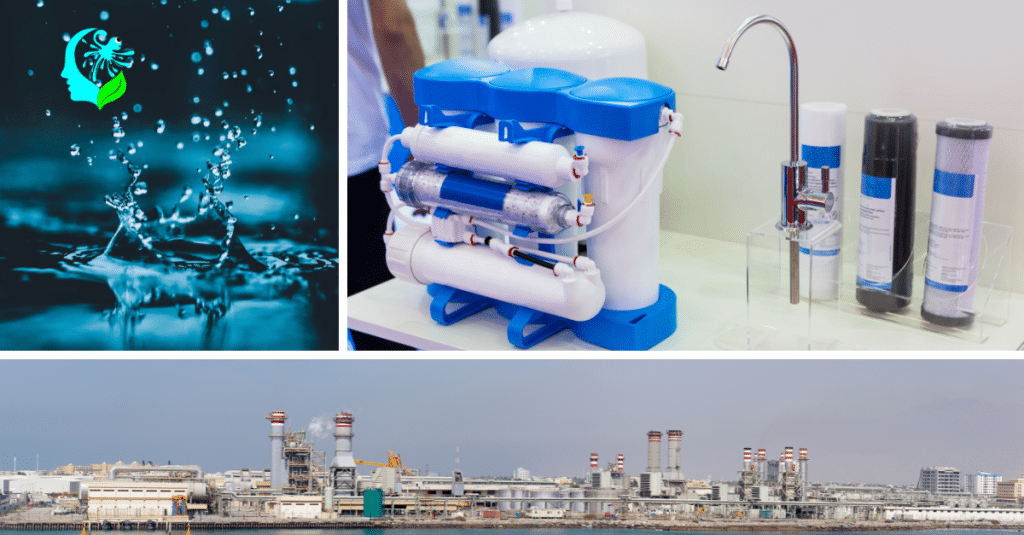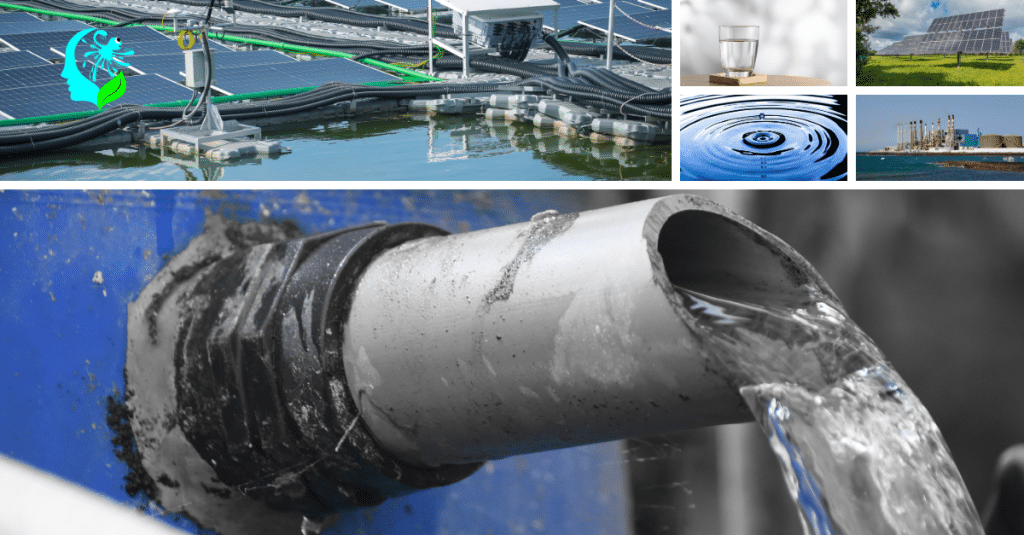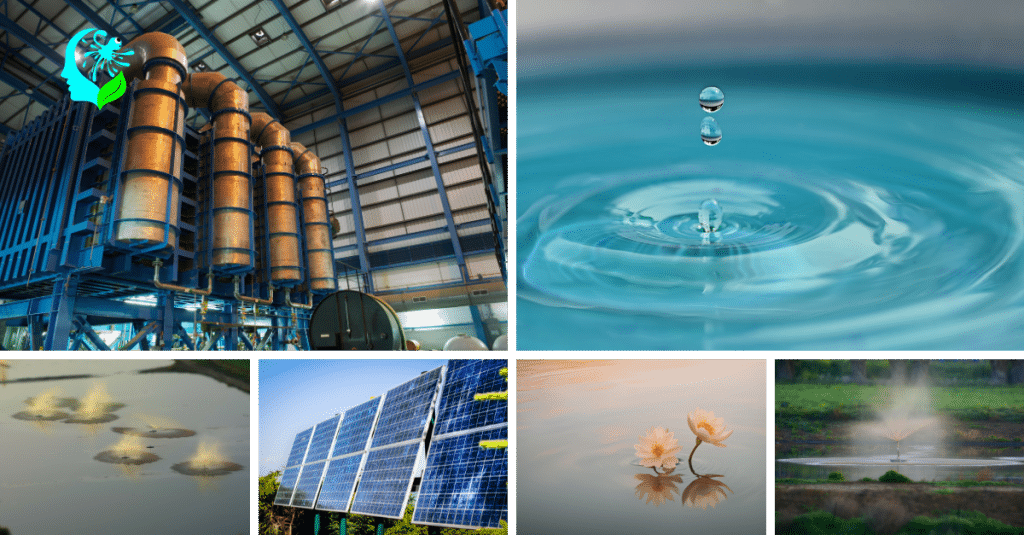Discover how MIT's solar desalination technology produces drinking water cheaper than tap water. Compare thermal distillation, reverse osmosis, and battery-free systems to find which option best suits your water needs, location, and budget—from portable units to community-scale installations.
Your Choices in Solar Water Desalination Tech & Main Points For Choosing

Key Takeaways:
- MIT's breakthrough solar desalination technology can produce drinking water cheaper than tap water, using innovative salt-circulation techniques
- Solar desalination technologies vary widely from thermal distillation to reverse osmosis, each with distinct benefits for different applications
- The right solar desalination choice depends on your water needs, location, and budget, with systems ranging from small household units to community-scale installations
- Battery-free solar desalination systems can reduce lifecycle costs by up to 70% while eliminating dependence on fossil fuels
- UpRooted Greens is helping homesteaders implement sustainable water solutions through innovative education
MIT's Breakthrough: How Solar Desalination Beats Tap Water Costs
A revolution in water access is taking shape as MIT engineers have developed a solar-powered desalination system that can produce drinking water cheaper than conventional tap water. This groundbreaking system harnesses natural sunlight to heat saltwater, creating swirling eddies similar to the ocean's natural 'thermohaline' circulation. Unlike previous designs that quickly became clogged with salt crystals, this innovative approach keeps salt continuously moving through the system rather than accumulating.
What makes this technology truly remarkable is its combination of simplicity and effectiveness. The system utilizes a tilted box with a dark material on top to absorb sunlight. Inside, the box is divided into top and bottom sections, with water flowing through the top half where an evaporator layer uses solar heat to evaporate water in direct contact. The resulting vapor is then channeled to the bottom half where a condensing layer cools it into salt-free drinking water.
When scaled to the size of a small suitcase, this passive solar desalination system could produce 4-6 liters of drinking water per hour and operate for several years before requiring replacement parts. The implications are enormous for coastal communities and water-scarce regions, where this technology could provide a sustainable and affordable freshwater source without relying on expensive infrastructure or energy inputs.
"For the first time, it is possible for water, produced by sunlight, to be even cheaper than tap water," says Lenan Zhang, a research scientist at MIT's Device Research Laboratory. The system's high water production rate and superior salt rejection performance make it a potential advancement in addressing global water scarcity challenges. UpRooted Greens is monitoring these innovations closely as they align perfectly with our mission to create sustainable water solutions for communities worldwide.
Core Solar Desalination Technologies Compared
When considering solar desalination options, it's crucial to understand the fundamental differences between available technologies. Each approach has distinct advantages, limitations, and ideal use cases depending on your specific water needs and environmental conditions.
1. Solar Thermal Distillation
Solar thermal distillation mimics the natural water cycle. This technology harnesses solar energy to heat seawater, creating water vapor that is then condensed into pure freshwater. The simplest form is a solar still – a shallow basin of saltwater covered by a transparent material where sunlight creates evaporation and condensation.
More advanced versions include multi-effect distillation (MED) and multi-stage flash distillation (MSF), which reuse heat energy across multiple stages to improve efficiency. These systems excel in reliability and water purity but typically have lower production rates compared to other methods.
2. Solar-Powered Reverse Osmosis
Reverse osmosis (RO) has become the dominant desalination technology worldwide, and when powered by solar photovoltaic panels, it offers a flexible and scalable solution. This process forces saltwater through a semipermeable membrane under pressure, allowing water molecules to pass through while blocking salt and impurities.
Solar-powered RO systems can range from small portable units to large community installations. The key advantage is higher water production efficiency, though these systems typically require more maintenance and membrane replacement over time. Recent innovations in energy recovery devices have significantly reduced the power requirements, making solar-powered RO increasingly viable even for larger applications.
3. Solar Electrodialysis
Electrodialysis uses an electric current generated from solar panels to separate salt ions from water. Ion-exchange membranes allow either positive or negative ions to pass through, effectively removing salt from the water stream. Unlike reverse osmosis, electrodialysis only removes charged particles, making it particularly efficient for brackish water with lower salt content rather than full seawater.
These systems typically consume less energy than RO for brackish water desalination and have fewer fouling issues, but aren't as effective for high-salinity applications. They're ideal for inland areas with moderately saline groundwater where energy efficiency is a priority.
4. Passive Solar Systems
Passive solar desalination systems, like MIT's breakthrough design, operate without pumps or external power sources, relying entirely on solar thermal energy and natural circulation principles. These systems typically involve designs that maximize evaporation and condensation processes while maintaining continuous operation.
The advantages include zero energy costs, minimal maintenance requirements, and impressive longevity. While production volumes are typically lower than active systems, the lack of moving parts and electricity requirements makes passive systems exceptionally reliable and suitable for remote locations where maintenance access is challenging.
How MIT Solved the Salt-Clogging Problem
One of the most persistent challenges in solar desalination has been salt accumulation and clogging. MIT engineers tackled this issue through a biomimetic approach – studying and replicating natural ocean circulation patterns known as thermohaline circulation.
Previous passive solar desalination designs faced a fundamental dilemma: salt would inevitably accumulate on evaporation surfaces, requiring frequent cleaning or replacement of components. MIT's innovation was to create a system that maintains constant water movement, mimicking how density differences in the ocean (caused by temperature and salinity variations) drive global water circulation.
Their system incorporates a tilted design that uses natural convection currents. As saltwater is heated by the sun, it becomes less dense and rises. Meanwhile, the increasing salt concentration in some areas creates denser water that naturally sinks. These opposing forces create continuous circulation patterns that prevent salt from settling and accumulating on surfaces.
What makes this approach particularly remarkable is that it requires no external energy input to maintain this circulation. The system is entirely self-regulating, using only the physics of fluid dynamics and solar heating to keep salt moving through the system rather than depositing on surfaces.
This innovation allows the MIT system to operate for years without maintenance, significantly reducing the lifecycle cost of producing freshwater. At UpRooted Greens, we recognize that solving fundamental challenges like salt accumulation is key to making solar desalination truly sustainable and accessible to communities worldwide.

The Economics of Solar Desalination
When evaluating solar desalination systems, understanding the economic factors is crucial for making an informed decision. Unlike conventional water sources, solar desalination involves significant upfront investment but can deliver substantial long-term savings and benefits.
1. Capital Costs vs. Operating Expenses
The initial investment for solar desalination systems varies widely depending on technology type, scale, and location. Passive solar systems typically have lower capital costs but produce less water, while reverse osmosis systems with solar PV arrays require higher upfront investment but offer greater production capacity.
What makes solar desalination particularly attractive is the dramatic reduction in operating expenses. Traditional desalination plants incur substantial ongoing costs for electricity or fuel, but solar-powered systems largely eliminate these expenses. A Finnish innovation has demonstrated that battery-free solar desalination can reduce lifecycle costs by more than 70% compared to conventional approaches.
2. Water Production Rates and Efficiency
Water production capacity directly impacts economic viability. Small household systems might produce 10-50 liters per day, while community-scale installations can generate thousands of liters hourly. The Finnish system mentioned earlier can produce 3,000 liters of potable water per hour without requiring batteries for energy storage.
Energy efficiency remains the critical factor in economic performance. Recent innovations in energy recovery technology allow some systems to operate with 70% less electricity than traditional methods. This dramatically improves the return on investment and makes solar desalination competitive with conventional water sources in many regions.
3. Maintenance Requirements and Lifetime
Maintenance costs and system longevity significantly impact the economics of solar desalination. Passive solar stills require minimal maintenance but may need periodic cleaning. Membrane-based systems like reverse osmosis require more regular attention, including membrane replacement every 3-7 years depending on water quality and operating conditions.
The MIT system represents a breakthrough in this regard, with projected operation for several years before requiring replacement parts. This extended lifetime dramatically improves the economics, especially for remote installations where maintenance access is challenging and costly.
Battery-Free Systems: The Next Evolution in Efficiency
One of the most promising developments in solar desalination is the emergence of battery-free systems that can operate directly on solar power. Traditionally, the intermittent nature of solar energy has been a significant limitation, requiring either battery storage (adding substantial cost) or hybrid systems with backup power sources.
Battery-free designs overcome these limitations through new approaches to energy management. Some systems incorporate thermal energy storage using water itself as the storage medium, allowing operation to continue briefly during cloud cover. Others utilize specialized control systems that adjust operation based on available sunlight, automatically modulating pressure and flow rates to maintain optimal performance.
The Finnish innovation mentioned earlier demonstrates the potential of this approach, delivering 3,000 liters of potable water hourly without batteries. By eliminating the need for expensive battery storage systems, these technologies reduce both capital costs and maintenance requirements while extending system lifetime.
Beyond economic benefits, battery-free systems offer environmental advantages by eliminating the resource-intensive production and eventual disposal of batteries. This aligns perfectly with the sustainability goals that typically motivate solar desalination projects in the first place.
Real-World Applications Across Different Environments
1. Remote Coastal Communities
Solar desalination has proven transformative for isolated coastal communities with limited freshwater resources. In Madagascar, a solar-powered system now provides clean drinking water to a community that previously relied on brackish wells or distant water sources. The system's independence from external power or water infrastructure makes it ideal for locations where conventional utilities are unavailable or unreliable.
2. Drought-Prone Regions
In regions facing recurring drought conditions, solar desalination offers a climate-resilient water supply. Projects in Morocco's arid coastal zones demonstrate how these systems can provide consistent water access regardless of rainfall patterns. By utilizing seawater—an essentially unlimited resource—these communities gain independence from weather-dependent water sources.
3. Off-Grid Installations
Solar desalination is increasingly popular for off-grid applications ranging from remote research stations to eco-resorts. These installations value the self-sufficiency and sustainability that comes from generating both power and water from renewable resources. The elimination of fuel transportation costs makes solar desalination particularly advantageous in locations accessible only by boat or air.

Making the Right Choice: 5 Essential Decision Factors for Your Water Needs
Selecting the optimal solar desalination system requires careful consideration of your specific circumstances and requirements. Here are the five most critical factors to evaluate:
- Water Quality Requirements: Different technologies produce water of varying purity levels. If you need extremely pure water for medical or specific industrial applications, distillation systems might be preferable despite higher energy requirements. For drinking water, reverse osmosis typically provides excellent quality at greater efficiency.
- Production Capacity Needs: Realistically assess your daily water requirements. Small households might be served well by passive solar stills, while communities or businesses will need more productive systems like solar-powered reverse osmosis.
- Available Solar Resources: Your location's solar intensity and seasonal variations significantly impact system performance. Regions with consistent strong sunlight can utilize simpler systems, while areas with variable conditions might require hybrid approaches or energy storage solutions.
- Maintenance Capabilities: Consider your ability to perform or access maintenance services. Remote locations with limited technical support should prioritize simpler, more robust systems with fewer moving parts and consumables.
- Budget Constraints: While initial cost is important, focusing on the total lifecycle cost provides a more accurate picture. A higher upfront investment in more efficient technology often delivers better long-term value through reduced operating expenses and longer service life.
By carefully evaluating these factors, you can identify the solar desalination solution that best matches your specific water needs and circumstances. UpRooted Greens is dedicated to helping communities implement sustainable water solutions that provide clean, accessible water while protecting our planet's precious resources.
